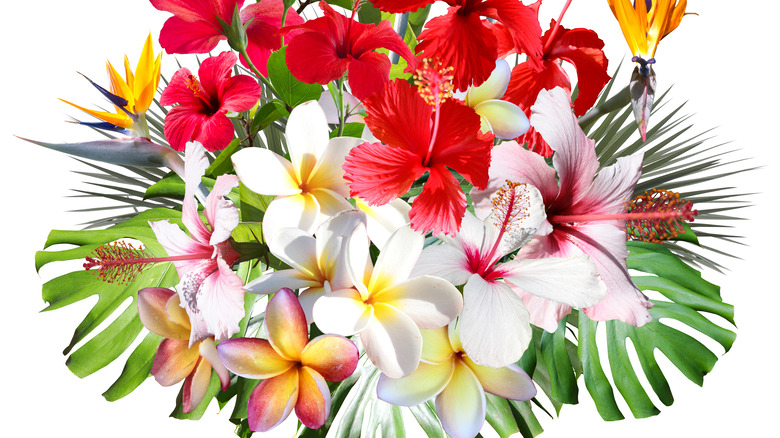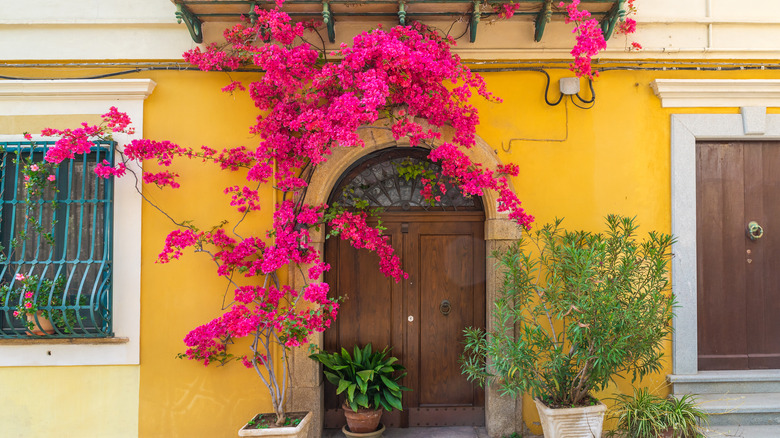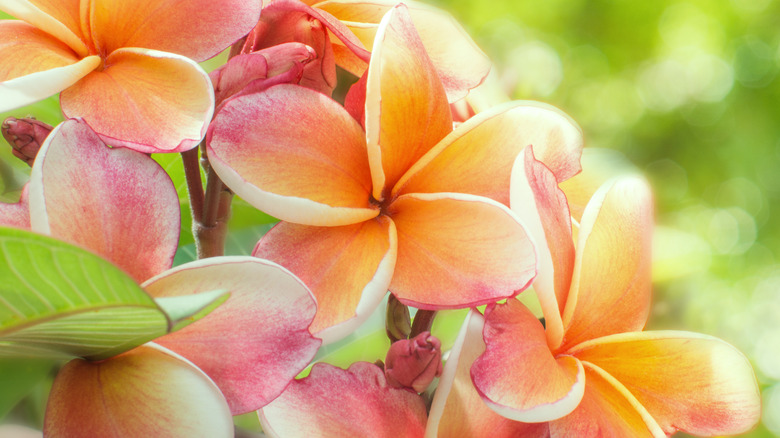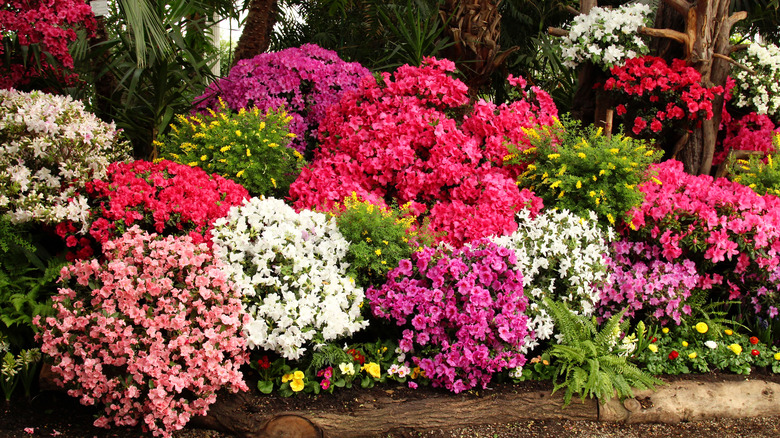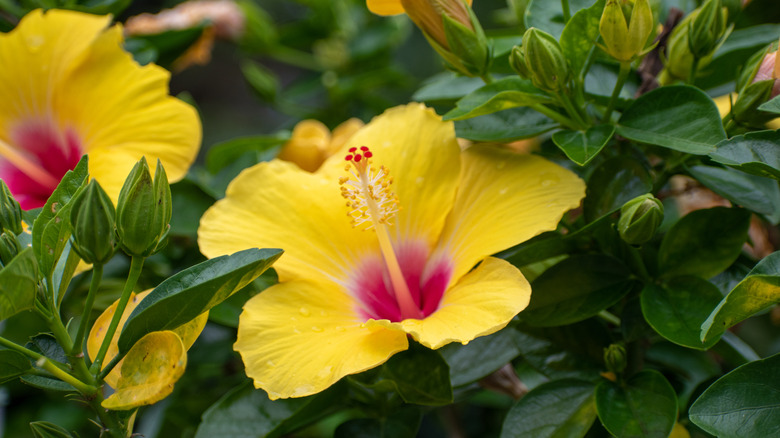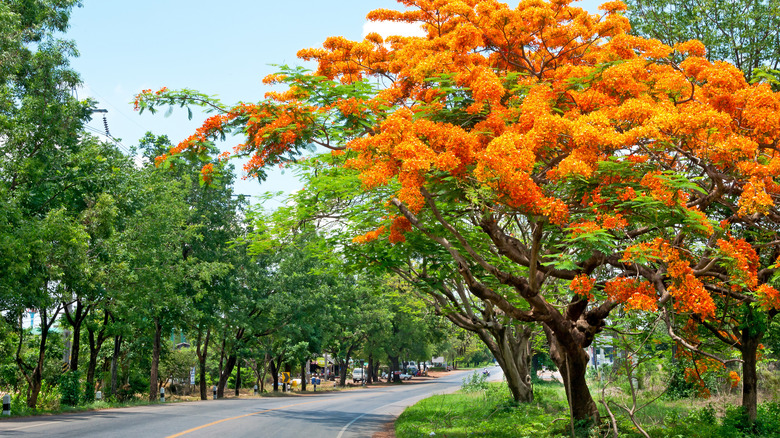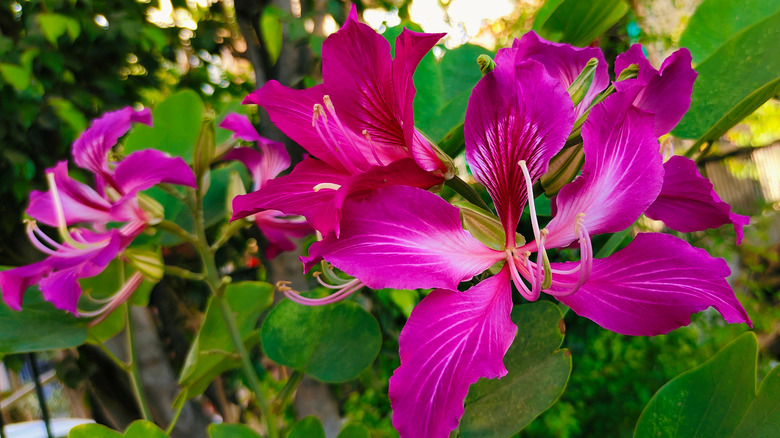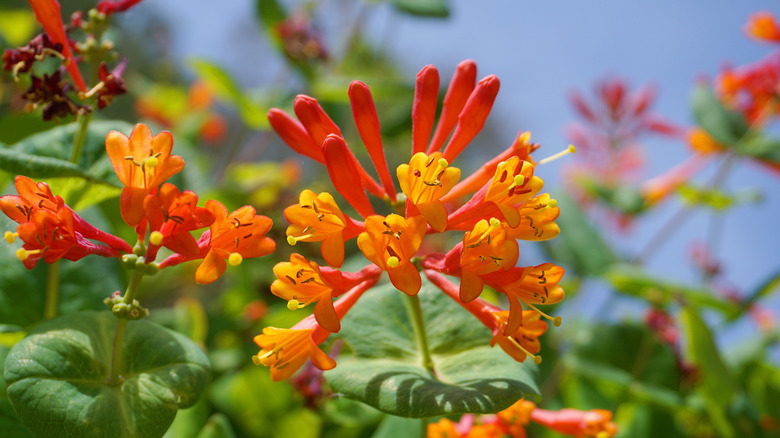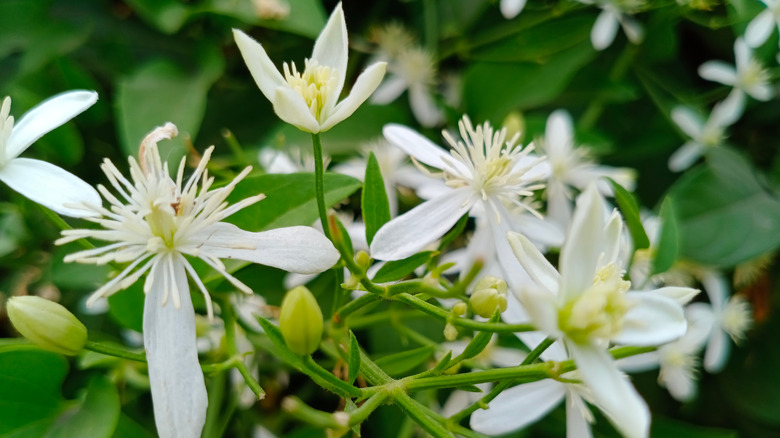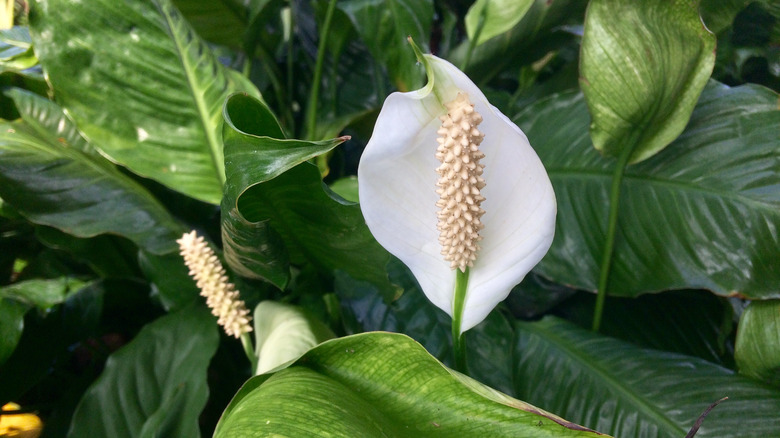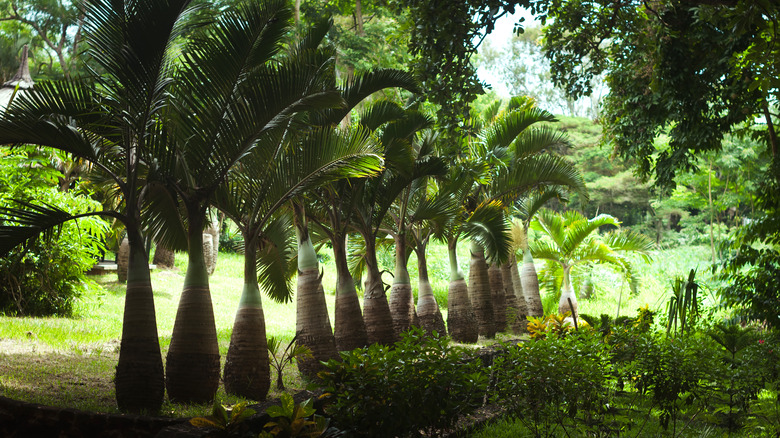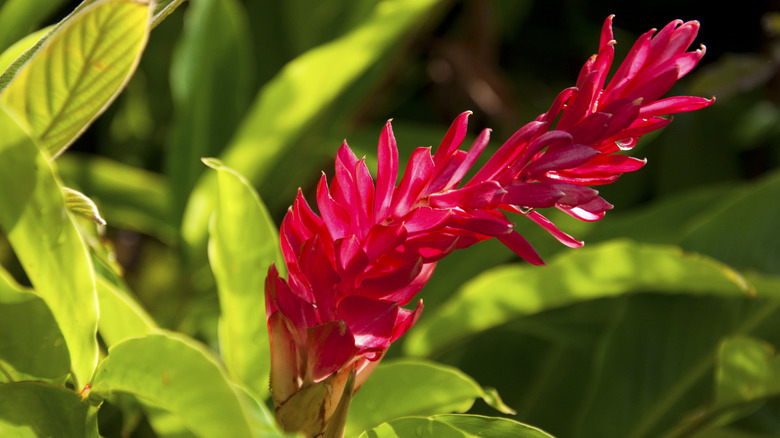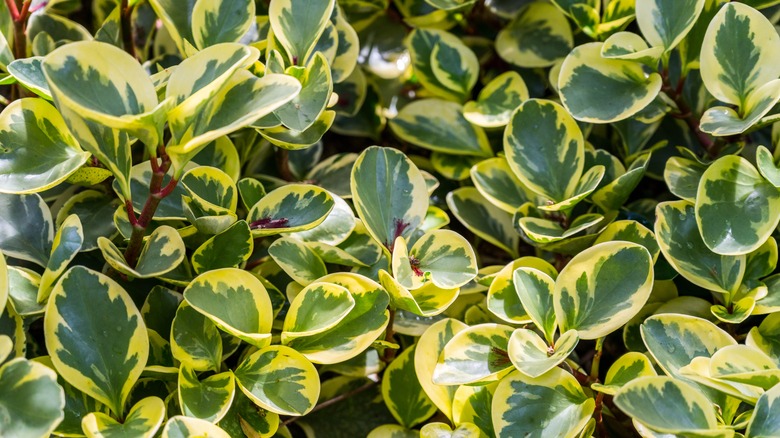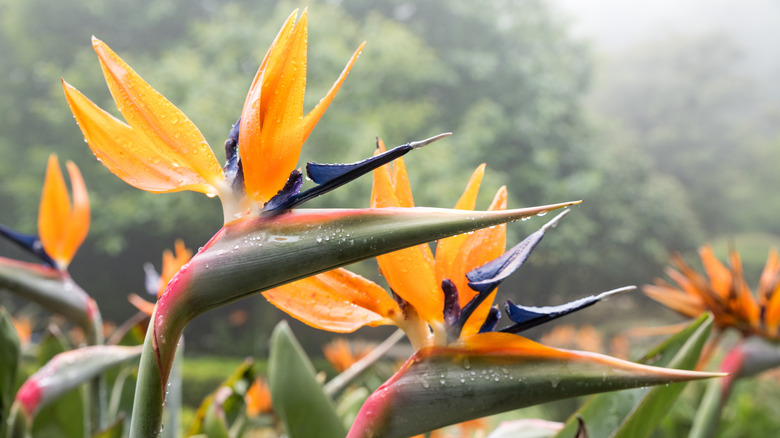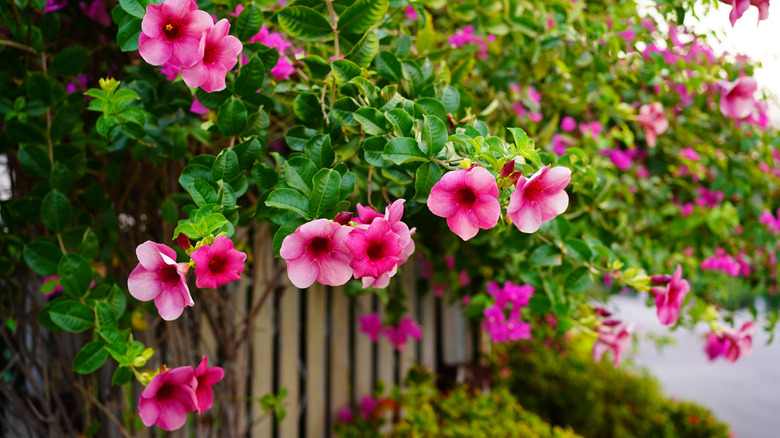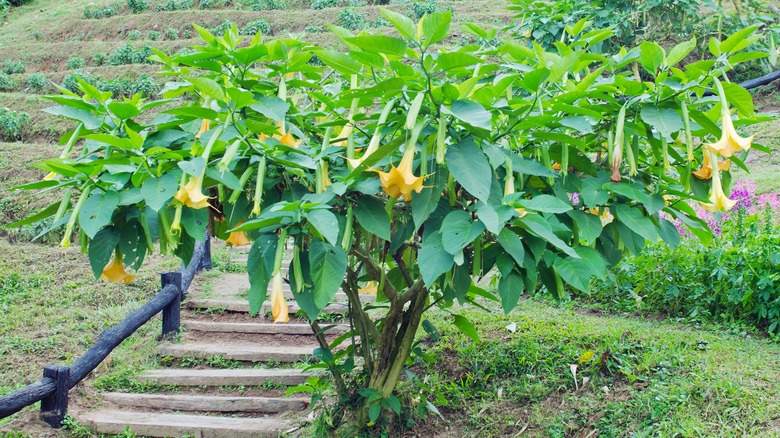15 Best Plants To Grow In USDA Zone 10
As you begin to plan out your garden or think about what trees and flowers you wish to adorn your front yard, it's crucial to consider which USDA hardiness zone best describes the area in which you live. This is the first factor to take into consideration regarding what grows where. In total, there are 13 zones, each correlating to a 10-degree Fahrenheit spread of average winter temperatures. Many of the flowering annuals that need to be replanted each season in colder zones will actually bloom perennially in certain areas of the states that lie closest to the equator. These include Hawaii, South Florida, and Southern California.
Intense, vibrant displays of color may be the best thing that separates so many heat- and humidity-loving tropical plants from the rest of the pack. Often their blooms are larger and their shapes more interesting as well. This list is far from comprehensive but we know you'll enjoy it, and you're sure to find a few (if not 15) exciting options just waiting to be incorporated into your zone 10 landscaping designs!
1. Bougainvillea
Bougainvillea (Bougainvillea spp.) is a plant that just won't quit. Per Garden Design, it's happiest when you leave it alone outdoors in the scorching sun and it showcases a nonstop flush of near-fluorescent brightly colored blossoms. Pruning is essential for these overzealous growers, which can be trained to stretch up and along just about anything.
Bloom Season: On and off year-round
USDA Hardiness Zones: 9 to 11
Growing Conditions: Full sun
Soil Type: Well-draining and slightly acidic
Size: Average 20 to 30 feet tall with smaller ground cover and dwarf options
2. Frangipani
Frangipani (Plumeria spp.), often referred to by its botanical name plumeria, is the epitome of the tropical flower. It evokes images of Hawaiian leis and the aloha spirit while also emitting a deliciously sweet fragrance. Note that a leafless frangipani tree in winter is not dead. Let it be and before you know it, spring will arrive and it will go right back to growing foliage and flowering.
Bloom Season: Spring, summer, and fall
USDA Hardiness Zones: 9 to 11
Growing Conditions: Full sun
Soil Type: Well-draining and slightly acidic
Size: Up to 20 feet tall
3. Azaleas
Is there anything not to love about the brilliant show put on by azalea bushes (Rhododendron spp.)? Its most common colors range from purple to red to pink and white. When planting azaleas, acidic soil is important; however, according to the Azalea Society of America, these plants have no need for fertilizer.
Bloom Season: Once in spring and again in fall
USDA Hardiness Zones: 7 to 10
Growing Conditions: Part sun, part shade
Soil Type: Humus-rich; moist yet well-draining; acidic; no need to fertilize
Size: Varies significantly between varieties with the average staying around 3 to 5 feet tall
4. Hibiscus
Yellow, pink, blue, red, and orange; in truth hibiscus (Hibiscus rosa-sinensis) flowers come in too many colors to list, with many blossoms having starkly different hues in their centers as compared to the outer regions of their petals. Hibiscus come as shrubs or trees, and there's even a weeping variety, per ArtisTree Landscape Maintenance and Design.
Bloom Season: On and off year-round
USDA Hardiness Zones: 8 to 10
Growing Conditions: Full to part sun with regular watering
Soil Type: Moist yet well-draining
Size: 3 to 10 feet tall, 2 to 8 feet wide; dwarf options are available as well
5. Royal poinciana
To the casual observer, something as fancy as the royal poinciana (Delonix regia) tree may seem like a tropical dream. But if you've ever been to South Florida, you know these trees are everywhere, and there's no reason for you to miss out on this level of flash. If you've got a large amount of yard space, then the South Florida Plant Guide says go for it!
Bloom Season: Summer
USDA Hardiness Zones: 10 to 11
Growing Conditions: Full sun
Soil Type: Well-draining with regular fertilization
Size: 40 to 50 feet tall, equally wide or wider
6. Hong Kong orchid
Bauhinia x blakeana, the Hong Kong orchid tree, is called the most beautiful tree you can grow in your yard for very good reason, per Monrovia. Just look at those vivid fuchsia blossoms! This tree blooms in winter, infusing the landscape with a much-needed splash of color in the otherwise duller months. Because it is a hybrid, it does not produce messy seed pods.
Bloom Season: Winter and spring
USDA Hardiness Zones: 9 to 11
Growing Conditions: Full sun
Soil Type: Evenly moist with regular watering
Size: Up to 20 feet tall, up to 20 feet wide
7. Coral honeysuckle
Coral honeysuckle (Lonicera sempervirens) is a medicinal climbing vine with bright red — though sometimes yellow — clusters of flowers. According to the Lady Bird Johnson Wildflower Center, it has been proven to aid in asthma and sore throat-related issues, and its leaves can help soothe a bee sting. Train it up and over an arbor or along a fence.
Bloom Season: Spring and summer
USDA Hardiness Zones: 4 to 10
Growing Conditions: Sun to part shade
Soil Type: Moist yet well-draining; prefers rich over sandy
Size: 15 to 20 feet high with 2-inch long flowers
8. Night-blooming jasmine
With night-blooming jasmine (Cestrum nocturnum), you get a plant that will soak up direct sun all day long and continue to enjoy the toasty warm nights. Per Dengarden, these night dwellers attract bats and moths for pollination because, as you likely guessed, that's when their delicate flowers open up. Also called lady of the night, they fill the air with an abundant and delicious fragrance.
Bloom Season: Summer
USDA Hardiness Zones: 9 to 11
Growing Conditions: Full sun to minimal part shade
Soil Type: Well-draining; chalk, loam, sand
Size: Up to 8 feet tall and 3 feet wide
9. Peace lily
Peace lilies (Spathiphyllum spp.) are a popular houseplant but they also do well outdoors. When grown in the garden, they will be much bigger than their indoor counterparts, often reaching 6 feet high. Peace lilies grow from rhizomes. After dividing, new plants can be grown in water.
Bloom Season: Per Almanac.com, summer bloomers may keep going all year with blossoms that individually last for up to a month.
USDA Hardiness Zones: 10 to 11
Growing Conditions: Part sun to part shade; high humidity
Soil Type: Well-draining; all-purpose; neutral pH
Size: Up to 6 feet tall
10. Palm trees
All members of the palm family (Arecaceae) fare well in warm regions like zone 10. And there are many to choose from! There are bushy palm trees that stay relatively low to the ground, like the Coontie arrowroot (Zamia coontie). Others reach up to an average of 10 feet, like the bottle palm (Hyophorbe lagenicaulis) shown above. And, of course, there are the giants, like the Christmas palm (Adonidia merrillii) that can grow to a massive 60 feet.
Bloom Season: Varies, insignificant blooms
USDA Hardiness Zones: Varies
Growing Conditions: Full sun
Soil Type: Sand-based, loam
Size: Varies
11. Ornamental gingers
Ornamental gingers primarily come from the Hedychium, Costus, and Curcuma genera of the Zingiberaceae ginger family. These plants need high temperatures, making USDA hardiness zone 10 just right for them. You'll find an incredible array of exotic shapes and colors when it comes to choosing the right ornamental ginger for your garden. Have fun with it as each one is unique!
Bloom Season: Summer
USDA Hardiness Zones: 9 to 11
Growing Conditions: Part sun to part shade
Soil Type: Organically rich; moist yet well-draining
Size: Varies up to 20 feet tall often with oversized blooms
12. Peperomia
According to Backyard Boss, zone 10 is the place to be for happy outdoor insane-amounts-of-sun-loving baby rubber plants (Peperomia obtusifolia). Give them enough light — and by that we mean 12 hours per day — and they should be easy to care for. Baby rubber plants are drought-tolerant due to their similarities to succulents.
Bloom Season: Off and on year-round
USDA Hardiness Zones: 10 to 12
Growing Conditions: Full sun all day long
Soil Type: Loose, chunky; acidic; in a pinch, go with an orchid mix
Size: 10 to 12 inches tall
13. Bird of paradises bushes
For those aspiring toward a unique and perhaps just a little bit quirky garden, don't forget the bird of paradise (Strelitzia reginae). Audaciously bright and unapologetically odd, the bird of paradise flower makes a statement wherever it grows. Per Gardenia, some mites and mealybugs may cause issues but they are otherwise disease- and pest-resistant.
Bloom Season: On and off year-round
USDA Hardiness Zones: 10 to 12
Growing Conditions: Full sun to partial sun
Soil Type: Chalk, loam, sand
Size: 3 to 4 feet wide, 5 to 6 feet high
14. Allamanda vines
Well, here's something absolutely beautiful. If you live in zone 10, consider yourself lucky when it comes to allamanda vines (Allamanda cathartica) because you're in one of the very few places that can sustain these lovely climbers year-round. Missouri Botanical Garden advises that since these vines do not have any roots or tendrils, they will need support structures for proper training.
Bloom Season: Summer and fall
USDA Hardiness Zones: 10 to 11
Growing Conditions: Full sun
Soil Type: Organically rich; moist yet well-draining
Size: 3 to 6 feet wide, 10 to 20 feet tall
15. Angel's trumpet tree
Fast-growing and highly fragrant, the angel's trumpet (Brugmansia spp.) is a super cute flowering shrub that will perfume the evening air throughout your yard. Better Homes & Gardens suggests trimming back any suckers that shoot up from the base if you would like a single stem, tree-shaped shrub.
Bloom Season: Spring, summer, and fall
USDA Hardiness Zones: 7 to 11
Growing Conditions: Part to full sun
Soil Type: Moist yet well-draining
Size: 3 to 8 feet tall, 5 to 8 feet wide
